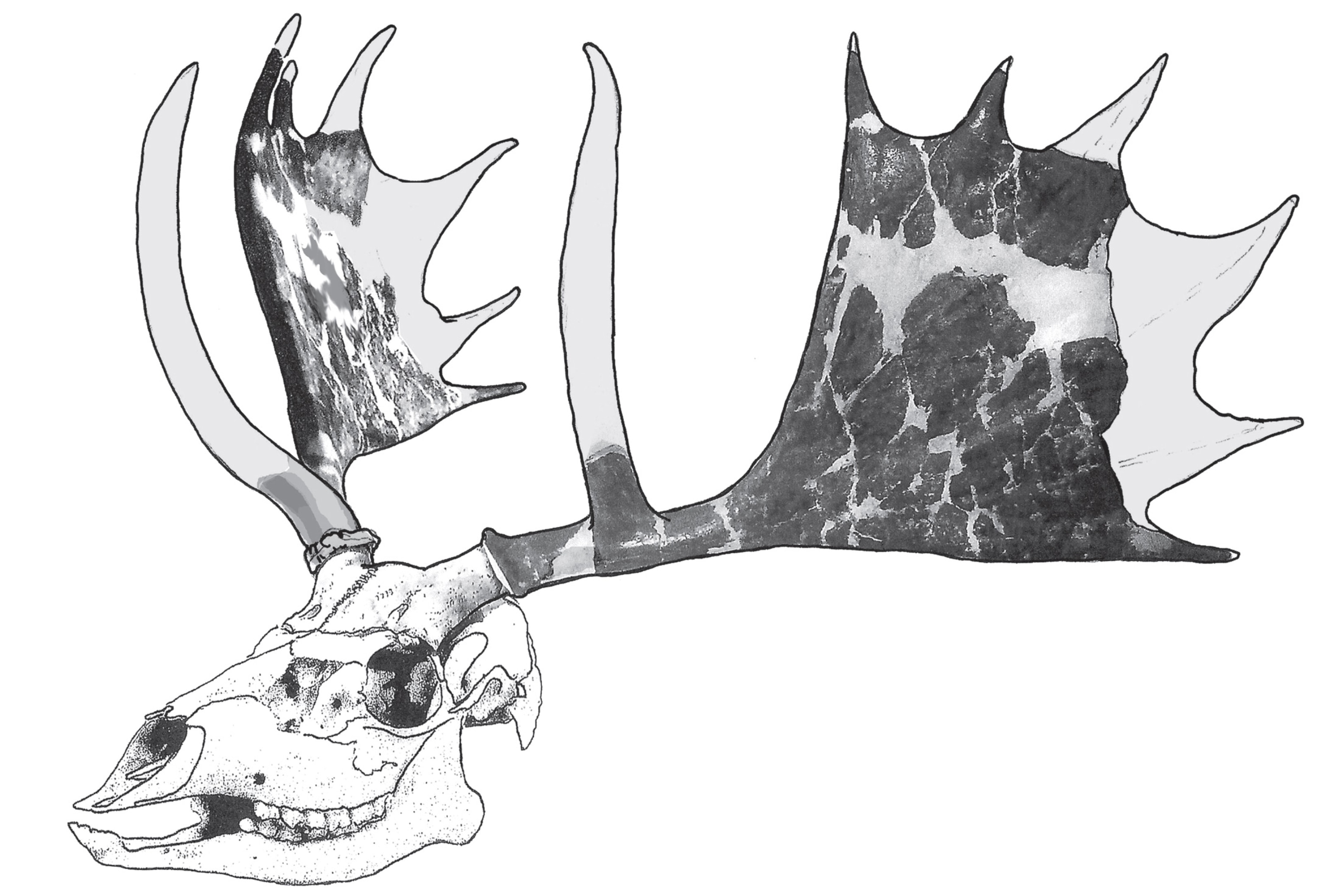Name: Bretzia pseudalces
Meaning: “Bretz’s false moose”, named for geologist J. Harlan Bretz and the moose-like shape of the deer’s antlers.
Age: About 5 million years ago.
Where in the world?: Washington state.
What sort of critter?: A deer.
Size: About the size of a modern mule deer.
How much of the creature’s body is known?: This deer is primarily known from its antlers, but various other skeletal elements including jaws, teeth, limb bones, and vertebrae have been found.

Claim to fame: When it comes to big mammals, North America isn’t as impressive as it once was. Gone are the mastodons, giant sloths, American lions, and other massive megafauna that trod the continent until around 10,000 years ago or so. In the shadow of the last Ice Age, deer are the largest beasts many of us are familiar with. But where did these antlered neighbors of ours come from?
Prehistoric deer aren’t exactly the hottest area of fossil research. Among other issues, paleontologist Eric Gustafson points out, the earliest deer – technically known as cervids – are rare and often represented from little more than scraps. But there are a few North American deer that are more than shards of tooth and antler. Among them is an animal Gustafson and colleague Willis Fry named Bretzia pseudalces in 1974.
Back in the Pliocene, around five million years ago, Bretzia pseudalces lived in the woodlands that covered Washington state. The mammal wouldn’t have been totally unfamiliar to our eyes – it would still be recognizable as a deer – but the antlers borne by the males would have immediately distinguished Bretzia. Their ornaments weren’t the branching set of tines seen in white-tailed or mule deer, but more like those of moose – a broad “palm” with tines dotting the edge preceded by a single spike near the attachment to the skull.
These beasts were some of the first deer in North America. Bretzia, as well as the ancestors of North America’s living deer species, were all descendants of immigrants that walked over from Asia sometime between 7 and 5 million years ago. They were part of a burst of deer evolution that sent the herbivores trotting through much of North America and set the foundation for an explosion of New World deer when prehistoric Panama touched South America around 3 million years ago. These were pioneer deer.
Reference:
Gustafson, E. 2015. An Early Pliocene North American deer: Bretzia pseudalces, its osteology, biology, and place in cervid history. The Bulletin of the Museum of Natural History. 25: 1-75.
Previous Paleo Profiles:
Atychodracon megacephalus
Sefapanosaurus zastronensis
Huanansaurus ganzhouensis
Zhenyuanlong suni
Lepidus praecisio
Nothronychus graffami
Ganguroo robustiter
Vulpes mathisoni
Ichibengops munyamadziensis
Pulanesaura eocollum
“Lightning Claw”
Gueragama sulamericana
Kerberos langebadreae
Kimbetopsalis simmonsae

